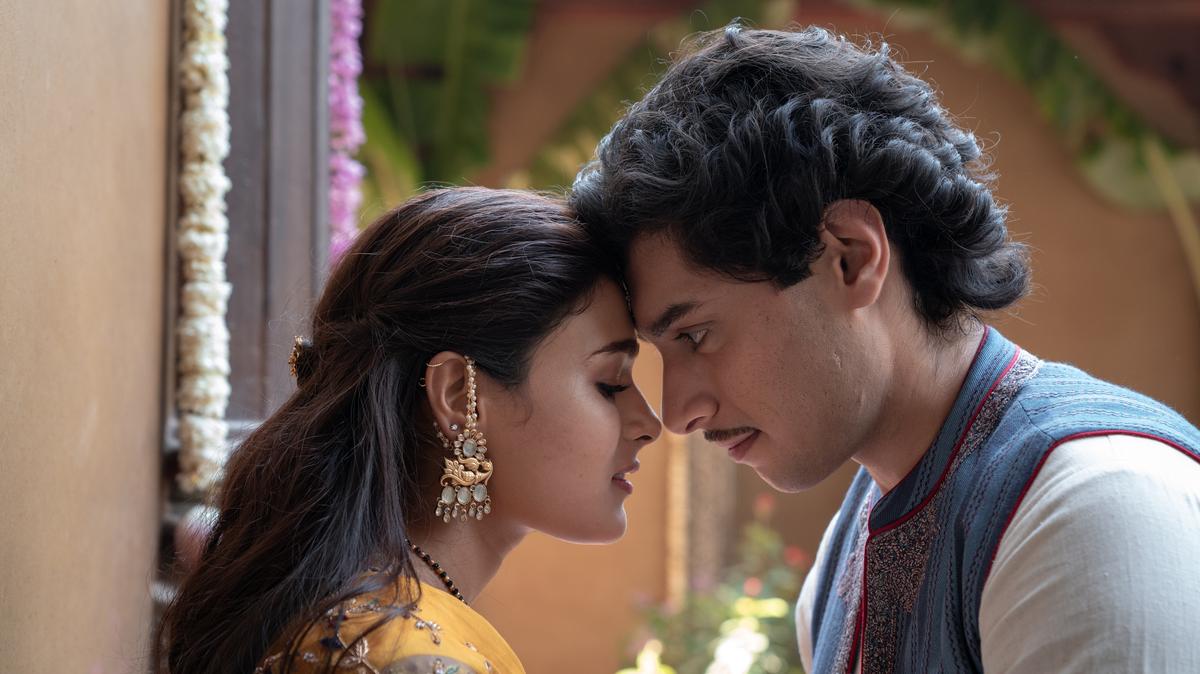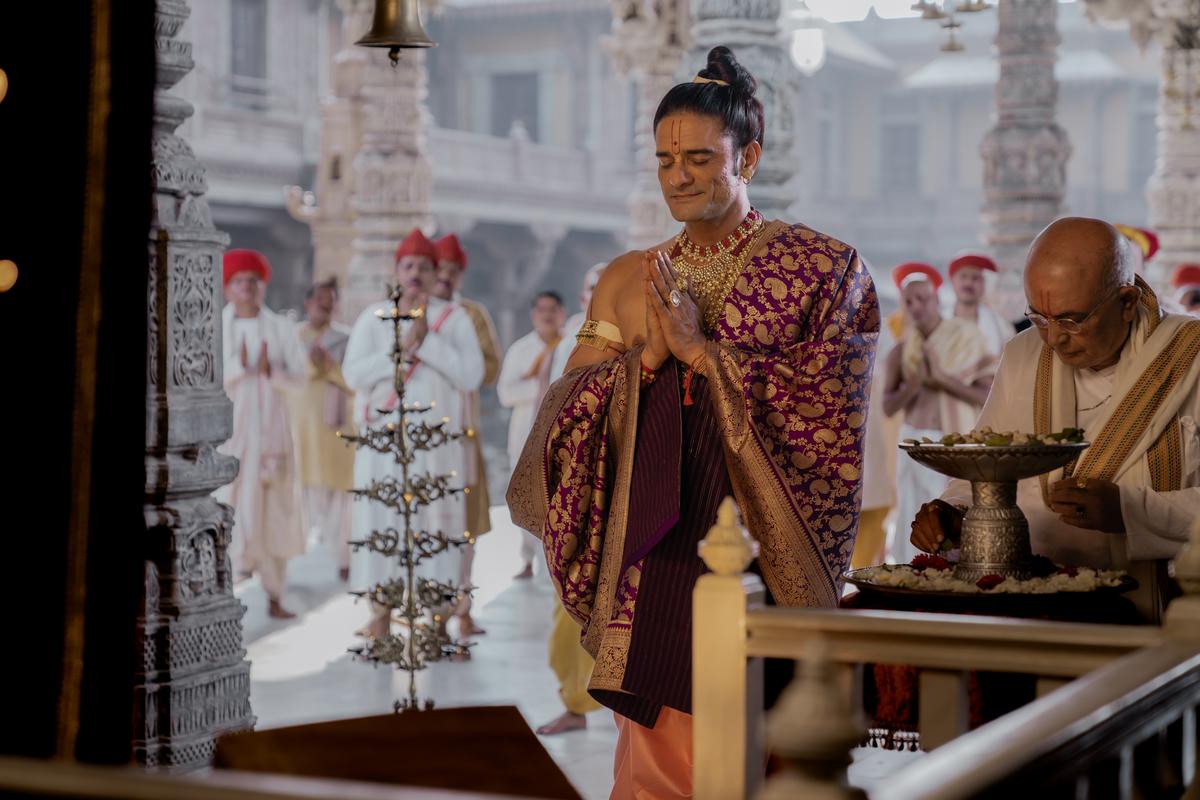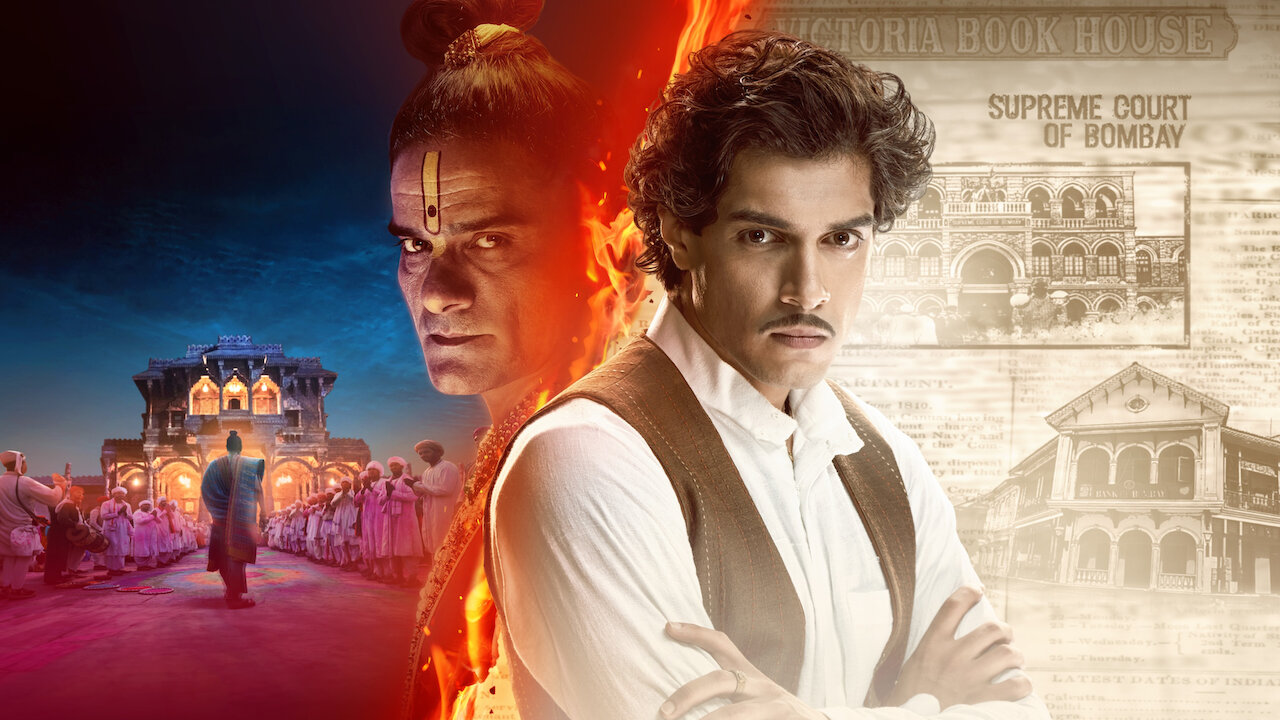Bollywood, known for its swashbuckling takes on Indian culture, has often faced backlash for making films that cater to religious dogma or challenge traditional and societal norms. The stirring controversy surrounding Maharaj highlights this enduring vulnerability of creative expressions and persisting religious biases.
Set in the colonial Indian era, Siddharth P. Malhotra’s Maharaj is based on the events that led to the famous Maharaj libel case of 1862. The movie primarily focuses on exploitation in the name of religion and devotion through the lens of journalist and social reformer Karsandas Mulji. Jadunath Maharaj, a godman, is challenged by Mulji for sexually abusing his female devotees in the shadow of religion.
Regarding the historical context of colonial India, which offers a rich canvas for the film, Maharaj struggles to capitalize on the complexity of its era. The inspection of religious exploitation and social reform is undeniably relevant, but the narrative often oversimplifies the gravity of these issues.
Instead of scrutinizing the moral ambiguities correlated with the cultural and political dynamics of the time, the film leans heavily on a black-and-white portrayal of the conflict between Mulji and Jadunath Maharaj. This lack of nuance dilutes the impact of what could have been a thought-provoking examination of power, faith, and morality in a turbulent period of Indian history.
In a society where talking about women’s rights is still alien, it should come as no surprise when the Vaishnavite Pushtimarg sect wants a stay-order on the film, demanding moral policing. Nonetheless, the audience’s interest and excitement regarding the film persevered, hardly dampening the buzz.
Presenting layers of lust and exploitation through leadership, power, and traditional beliefs, this movie delves into the blind reverence of a specific populace toward Maharaj, an inimical, self-proclaimed deity.
The film appears to pick up steam when the lead character, Karsandas Mulji, storms into a room where his fiancée, Kishori, is seen sexually engaged with Yadunath Maharaj (JJ) while purporting to carry out the “Charan Seva” ritual. With Meethi Laapsi at home, this specific act was considered sacred and a reason for celebration, painting a grim picture of blind reverence. Later, the narrative shows how every day, different female devotees fall victim to Jadunath Maharaj, or JJ’s lust.
In one crucial scene, Karsan is seen being taught that “Telling people they are wrong is not enough. You need to give them a chance to reform and rehabilitate, and that will bring about real change.” This discernment barely gets the time to stew as Karsan’s regret soon transforms into revenge, where Viraaj, another victim of the pattern, is shown to team up with him to fulfill his agenda.
“Putting Pen to Paper Lights More Fire than Matches Ever Will”

Writing can inspire, provoke change, and leave a legacy that endures.
Instead of meekly following the tide or resorting to radical actions, Karsan expresses his beliefs. He challenges the status quo through intellectual methods, which can be seen as his way of “putting pen to paper.”
Wired with cultural and familial expectations, his aspiration to pursue a secular education is perceived as an act of betrayal to his family and community. In a world of people succumbing to the weight of expectations, his immense courage to defy them is indeed praiseworthy. Through his writings and intellectual pursuits, others are challenged to think critically and participate in the greater good, which is a valuable contribution to society. Finally, the clash results in a face-off between Karsan and Yadunath Maharaj at the Supreme Court of Bombay when combative Karsandas Mulji files a libel suit after publishing a daring newspaper that meticulously exposed Yadunath Maharaj’s fraudulence in front of the commoners.
The movie effectively illustrates how writing, as a tool for expressing dissent, questioning norms, and advocating for change, has been and continues to be one of the most enduring forms of resistance throughout history.
Is The Movie Crudely Buried Under the Trademark ‘Yashrajification’?
The storyline, although engaging, is somewhat predictable. Coming from one of the leading production houses in India, this film barely ticks the required boxes. An imbalance can be seen among the characters compared to the movie’s tonality, which consequently feels faulty and often lackluster. Shilajit Mitra of The Hindu shares, “If not for the touchiness of our times, a film as simple, sedate, and self-congratulatory as Maharaj would likely slip under the radar.”
Despite its promising premise, Maharaj falters when it comes to character development and narrative depth. The film’s intended tone does not quite mesh with the characters, plot, or visual elements, as they lack the necessary complexity to genuinely connect with the audience. Even though the set design and cinematography are visually stunning, they are unable to make up for the lack of subtlety in the narrative, leaving viewers with a spectacle that feels more about style than substance.

The film’s careless pacing further diminishes its potential by making some important scenes seem hurried or underdeveloped while simultaneously dragging out others needlessly. As a result, the emotional stakes never fully materialize, making it difficult for the audience to invest in the characters’ journeys. Without a strong emotional core, the film remains only an aesthetically pleasing and ultimately hollow experience.
The film’s biggest limitation is how its core message—religion can be the biggest divider and unifier—gets buried under a quintessentially Bollywood direction. Maharaj gets crushed under the weight of keeping up with the Bollywood demand for heavy dialogues and routine song and dance sequences.
The conversation between two British officers: “It’s their religion which keeps them united, I say. It also divides them. How else have we ruled over them for so long?” begs for longer screen time and nuanced portrayal. The sudden mention of this statement feels quite off track considering the context presented, if not entirely aloof.
The central tension in Maharaj is more about systemic change and challenging powerful authorities who exploit religion for control. A rigorous path to social justice and reform can be observed in the movie. However, keeping its core issue at hand, the movie could have been better executed, highlighting the crucial plot and the British influence during that era.
The supposed potential for the film to offer a sharp critique of British colonialism and the intersection of religion and politics remains obscure. What could have been a hard-hitting examination of power dynamics and social reform gets overshadowed by an unduly commercialized approach. The film’s missed opportunities unfortunately weaken its overall impact.
Built with a likely similar concept, PK (2014) is a satirical, humorous, and thought-provoking film that critiques religion and does so in a way that invites introspection rather than confrontation. Although PK is more of a philosophical and ideological depiction, its humorous blend with religious hindrance reaches far beyond one’s moral reckoning.
Breaking Down the Characters
Amid all the fresh faces, Jaideep Ahlawat stands out with his subtle performance that oozes spooky duplicity, making him tower over everything and everyone else. Despite having the merest dialogue, he makes the most of his expressions, body language, and the portrayal of his subdued fury.
While keeping a chilling and calm demeanor, Jaideep looks convincing in sequences where he smirks and tries to woo his female devotees, serving justice to his character.
The newcomer, Junaid Khan, plays a young 19th-century Bombay journalist whose zeal for social reformation in an era of superstition puts him onto a collision course with a predatory pious man. Khan deftly tries to rise above the tameness of the script. A certain degree of performative stiffness can be seen in his gentle yet fearless demeanor. However, his appearance lacks the enormity and evocation of animosity the film demands.
Starring as Kishori, Shalini Pandey does a decent job with what she has, although her appearance adds little to the movie. Sharvari, on the other hand, steals the show with her fresh, vibrant, and cheerful entrance. As Viraj, she holds the story and the ‘entertainment’ element of the film and does a mind-blowing job. With the perfect accent, her annoying but well-intended catchphrases add layers to her character.
Overall Evaluation
With a brave attempt, Maharaj still leaves room for improvement. The narrow concept falters in many ways. Filled with forgettable and skippable songs, a movie genre such as Maharaj merely extends the screen time, further dragging unnecessary attention. Poor dialogue delivery is another backdrop. The lack of bold presentation, story pitching, and character development is so evident that it makes the fancy decorations and perfect period setup fall exceedingly flat. But despite faltering in many aspects, it can still be considered a one-time watch. The only two reasons to watch the movie are Jaideep Ahlawat for his towering presence and Junaid Khan for sheer curiosity.






